1994年北縣美展
- The 6th Taipei County Art Exhibition
No longer using flat and dimensional works as categories, submissions were divided into “general” and “special.” The latter is an attempt to use a juror “responsibility” system, with one person in charge of evaluation, interpretation and exhibition planning.
“General submissions” were curated by Lien Te-cheng, with awards granted to include Wu Chung-wei, Lin Cheng-sheng, Lu Mi, Tu Wei, and Wang Te-Yu, and “special submissions” reviewed by Ni Tsai-Chin. Tamsui riverside continued to serve as the exhibition site, enabling the exhibition space to move from indoors to outdoors, as an artistic practice of its Taiwanized bentu discourse.
The 6th Taipei County Art Exhibition “special submissions” became the forefront of the local government-sponsored outdoor exhibition in Taiwan art history, leading the way for exhibitions “Earth, City, and Symphony: Taiwan Installation Art” in Chiayi City, “The Heart of History” in Lukang, Changhua County, to the performative practices of artists’ occupation of Huashan Winery in the future.
- The 3rd “Ghost Festival Zhongyuan Pudu: Religious Arts Festival”
The 3rd “Ghost Festival Zhongyuan Pudu: Religious Arts Festival” shifted its focus to contemporary art practices, including: Wu Jungtze monumental sculpture Do good, stop evil, Hou Chun-Ming’s draft billboard Ten Courts of Hell, Chen Wen-Tzong designed lotus water lanterns, which were completed on-site by disability groups using old newspapers. There was also the “Zhongyuan Pudu Film Festival” at the Film Archives, and theatrical performances City Hell andButterfly Crossing.
- “Taipei Broken Life Festival”
Wu Chung-wei held the “Taipei Broken Life Festival” without permit at the Riverside Park under the Yongfu Bridge in Yonghe, an outdoor gathering combining installation art, experimental film, theater, music and camping.



